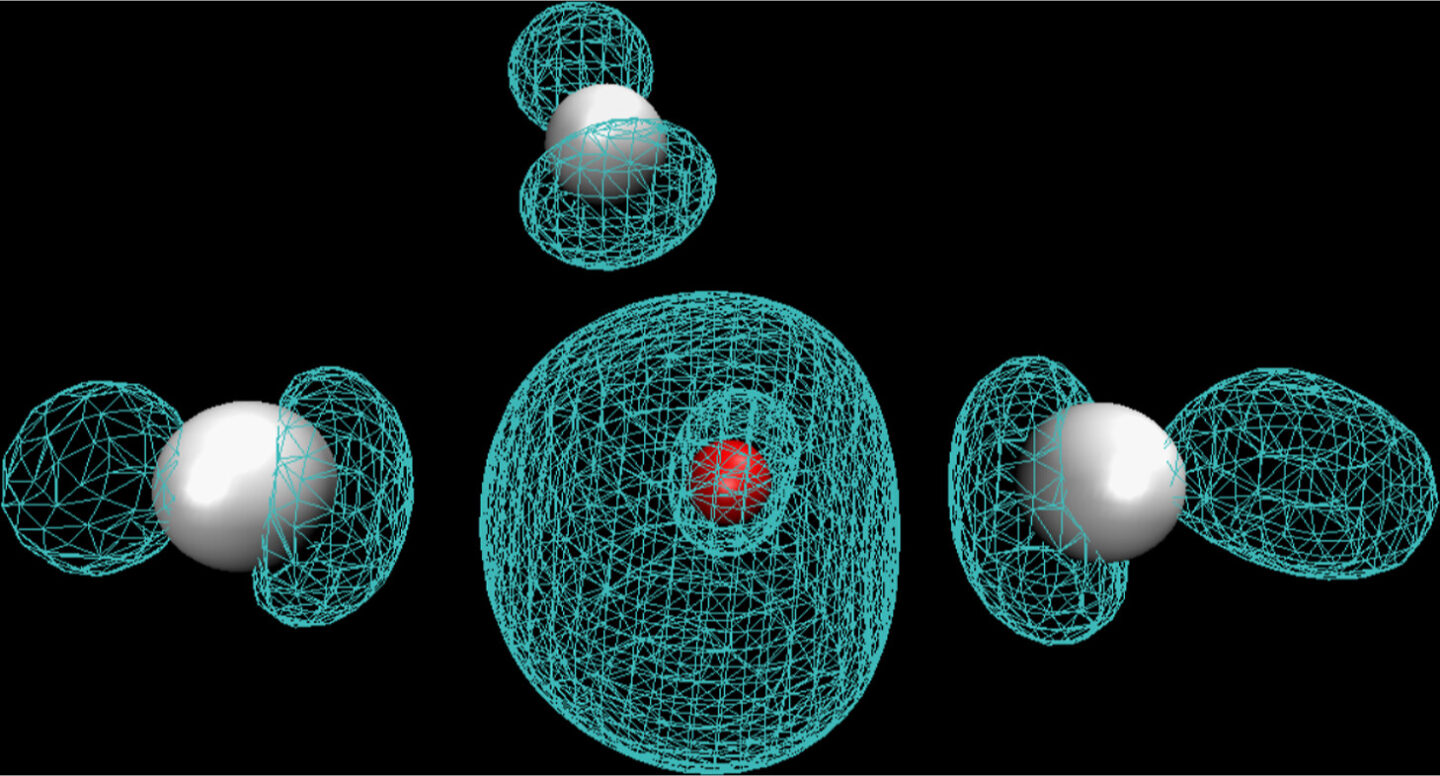Science Breakthrough
Using computing resources at NERSC, researchers at the University of Iowa and Oak Ridge National Laboratory (ORNL) have shown how electrons interact with ions of molten salts, providing insights into the processes that could occur inside salt-based nuclear reactors known as molten-salt reactors (MSRs). According to a new paper in the Journal of Physical Chemistry B, an excess electron can react with the salts to form any of three different states, or species, each with distinct properties.
Science Background
MSRs are considered a promising high-efficiency, inherently safer technology for electric power production. In this type of reactor, the nuclear fuel is dissolved in molten salt that also operates as the circulating heat transfer fluid. MSRs may be safer than other types of reactors because they operate at lower pressure and are designed to shut down into a passively safe state.
While early research indicated that the salts in MSRs are unreactive to radiation, more recent studies suggest that the ionic melts in these reactors can in fact react with radiation-generated electrons under certain conditions. Understanding those interactions can help predict the impact of radiation on the performance of MSRs.
Science Breakdown
To gain insight into the interactions inside MSRs, the researchers simulated the introduction of an extra electron into molten zinc chloride salt and observed the results. They found that the electron reacted with the molten salts to form any of three different species (part of a molecular radical including two zinc ions, localized on a single zinc ion, or diffused over multiple salt ions), each with different properties.
To perform this work, the researchers used both Cori and Perlmutter to run ab initio molecular dynamics trajectories including a solvated electron using the Generalized Gradient Approximation with the PBE-D3 density functional and single-point energy calculations for selected configurations using the PBE0-D3 hybrid density function. The calculations were performed via a code called CP2K; the input files produced at NERSC were later used as starting points for the periodic time-dependent density functional theory calculations performed on the Cades Condo research cluster at ORNL.
Additionally, after performing simulations on the NERSC systems, the researchers used the NERSC community file system to share and transfer trajectories composed of several terabytes of data between their teams at ORNL and the University of Iowa.
Research Lead
Hung H. Nguyen, The University of Iowa
Co-authors
Vyacheslav S. Bryantsev, Oak Ridge National Laboratory
Claudio J. Margulis, The University of Iowa
Publication
Nguyen, H. H., Bryantsev, V. S., & Margulis, C. J., “Are High-Temperature Molten Salts Reactive with Excess Electrons? Case of ZnCl2,” J. Phys. Chem. B 2023, 127 (42), 9155-9164.
Funding
The Molten Salts in Extreme Environments (MSEE) Energy Frontier Research Center, which supported this work, is funded by the U.S. Department of Energy, Office of Science, Office of Basic Energy Sciences.
User Facilities
National Energy Research Scientific Computing Center (NERSC)
About Computing Sciences at Berkeley Lab
High performance computing plays a critical role in scientific discovery. Researchers increasingly rely on advances in computer science, mathematics, computational science, data science, and large-scale computing and networking to increase our understanding of ourselves, our planet, and our universe. Berkeley Lab's Computing Sciences Area researches, develops, and deploys new foundations, tools, and technologies to meet these needs and to advance research across a broad range of scientific disciplines.


